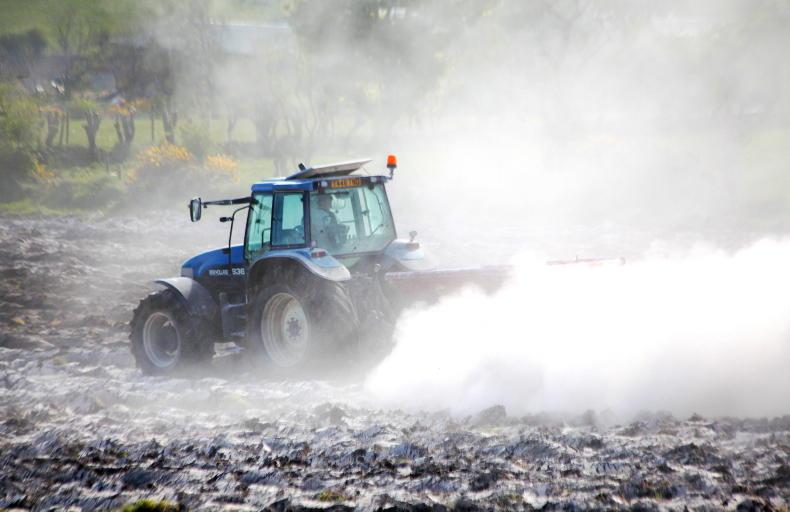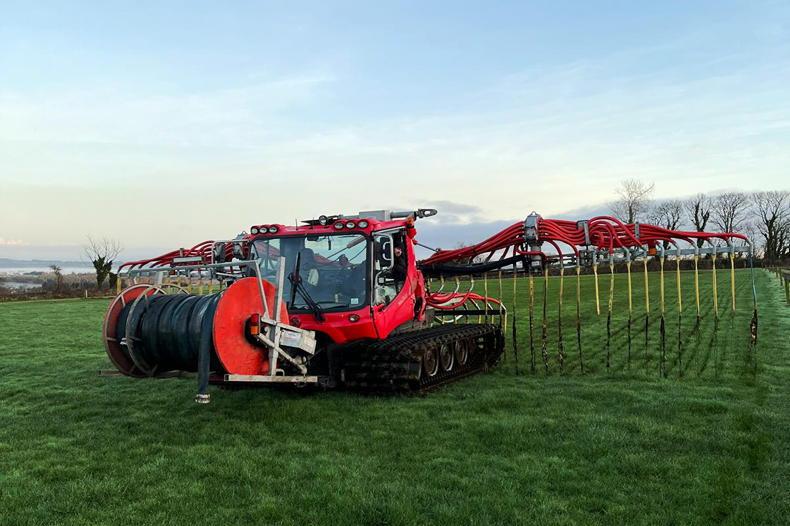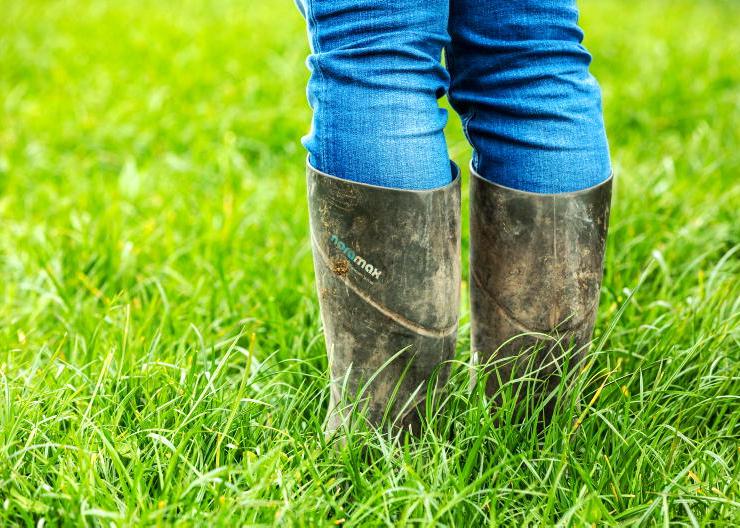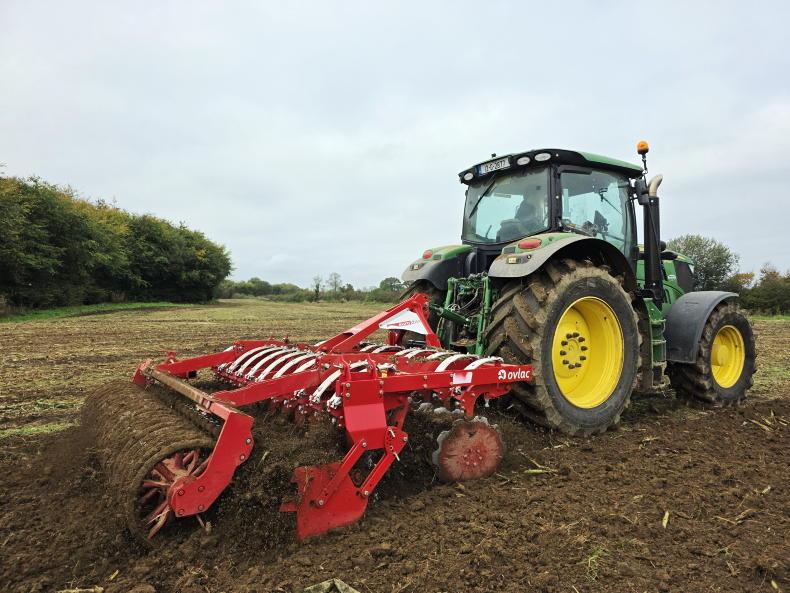Conditions are ideal for reseeding and July is a good time on beef farms to freshen up grazing swards.
Reseeding in mid-summer gives time to get the new sward established and a herbicide applied to control weeds as necessary.
There will also be more time to get a quick grazing, encouraging new grass seedlings to tiller out before resting over winter.
For farmers considering reseeding during summer, outlined are some tips to consider.
1. Apply lime, phosphate and potassium
When reseeding grazing swards in the summer, there is little point in soil sampling beforehand.
Soil samples will be distorted by phosphorus (P) and potassium (K) in recent fertiliser and slurry applications, or by nutrients excreted by grazing animals.
However, when reseeding, assume that the ground is low in fertility.
Applying 1t to 2t/acre of lime is recommended and some form of P and K, either through farmyard manure or chemical fertiliser.
This will help germination and root development in grass seedlings.
A soil sample can then be taken during winter to get a more accurate reflection of soil fertility.
2. Burning off old grass before reseeding
Burning off the old sward before reseeding is beneficial. First off, it controls the less productive grass and weeds and stops them coming back in the reseed.
Secondly, when stitching in grass seed, it improves the chances for new grass to establish and means there is less competition for soil nutrients.
3. Fixing any drainage or compaction problems
Before reseeding, make sure to alleviate any soil compaction or drainage problems.
Ploughing can help to alleviate some of these issues, but sub-soiling or stone and pipe drains may be required where bigger problems exist.
4. Choosing the right grass seed
There is a multitude of grass varieties and custom blends available for grassland.
So make sure you choose a grass mix that suits your soil, rather than choosing a mix based purely on price.
For grazing swards, diploid grasses are most suitable as they tiller out more than tetraploids.
In silage swards, a mix of diploids and tetraploids works well.
Late-heading varieties are also recommended for grazing.
Keep in mind grasses with good spring and autumn growth also. On heavier land, a mix with timothy can improve growth and stock-carrying capacity.
5. Post-reseeding
Once grass seed has been sown, a light roll will improve soil contact and retain soil moisture.
Once grass seed has established, keep an eye on weeds. A herbicide may be required if a lot of weeds start to emerge.
Once the new sward is ready to graze, use lighter stock to avoid damaging the new grass.
Sheep, dairy-cross calves or autumn weanlings are ideal for this role.
Graze the new sward hard and fast, then rest and repeat in the autumn. This will encourage grass to tiller out more and provide greater ground cover.
Read more
Strong retail demand drives beef prices
Lamb prices rising ahead of Eid al-Adha festival
Conditions are ideal for reseeding and July is a good time on beef farms to freshen up grazing swards.
Reseeding in mid-summer gives time to get the new sward established and a herbicide applied to control weeds as necessary.
There will also be more time to get a quick grazing, encouraging new grass seedlings to tiller out before resting over winter.
For farmers considering reseeding during summer, outlined are some tips to consider.
1. Apply lime, phosphate and potassium
When reseeding grazing swards in the summer, there is little point in soil sampling beforehand.
Soil samples will be distorted by phosphorus (P) and potassium (K) in recent fertiliser and slurry applications, or by nutrients excreted by grazing animals.
However, when reseeding, assume that the ground is low in fertility.
Applying 1t to 2t/acre of lime is recommended and some form of P and K, either through farmyard manure or chemical fertiliser.
This will help germination and root development in grass seedlings.
A soil sample can then be taken during winter to get a more accurate reflection of soil fertility.
2. Burning off old grass before reseeding
Burning off the old sward before reseeding is beneficial. First off, it controls the less productive grass and weeds and stops them coming back in the reseed.
Secondly, when stitching in grass seed, it improves the chances for new grass to establish and means there is less competition for soil nutrients.
3. Fixing any drainage or compaction problems
Before reseeding, make sure to alleviate any soil compaction or drainage problems.
Ploughing can help to alleviate some of these issues, but sub-soiling or stone and pipe drains may be required where bigger problems exist.
4. Choosing the right grass seed
There is a multitude of grass varieties and custom blends available for grassland.
So make sure you choose a grass mix that suits your soil, rather than choosing a mix based purely on price.
For grazing swards, diploid grasses are most suitable as they tiller out more than tetraploids.
In silage swards, a mix of diploids and tetraploids works well.
Late-heading varieties are also recommended for grazing.
Keep in mind grasses with good spring and autumn growth also. On heavier land, a mix with timothy can improve growth and stock-carrying capacity.
5. Post-reseeding
Once grass seed has been sown, a light roll will improve soil contact and retain soil moisture.
Once grass seed has established, keep an eye on weeds. A herbicide may be required if a lot of weeds start to emerge.
Once the new sward is ready to graze, use lighter stock to avoid damaging the new grass.
Sheep, dairy-cross calves or autumn weanlings are ideal for this role.
Graze the new sward hard and fast, then rest and repeat in the autumn. This will encourage grass to tiller out more and provide greater ground cover.
Read more
Strong retail demand drives beef prices
Lamb prices rising ahead of Eid al-Adha festival









SHARING OPTIONS